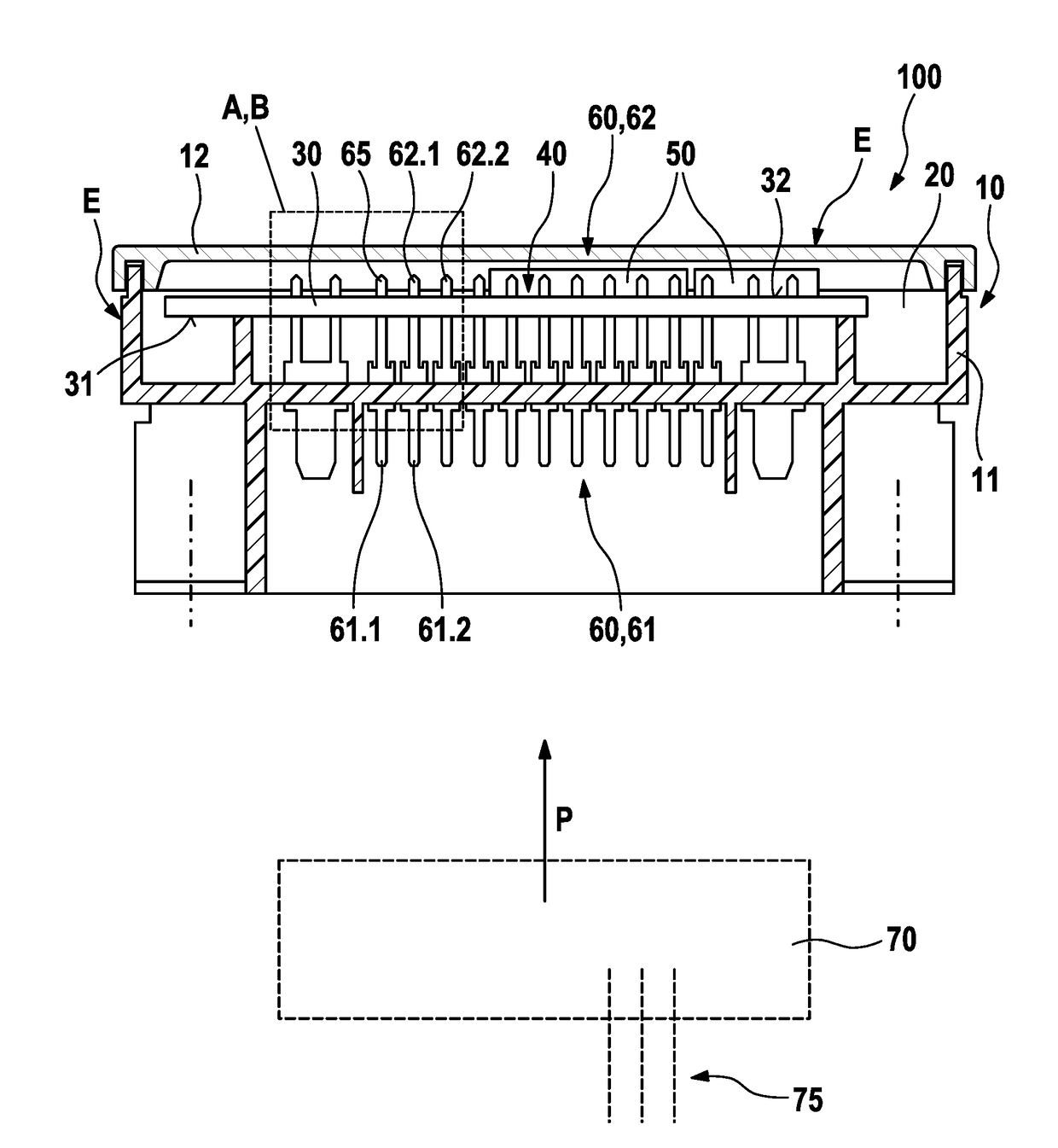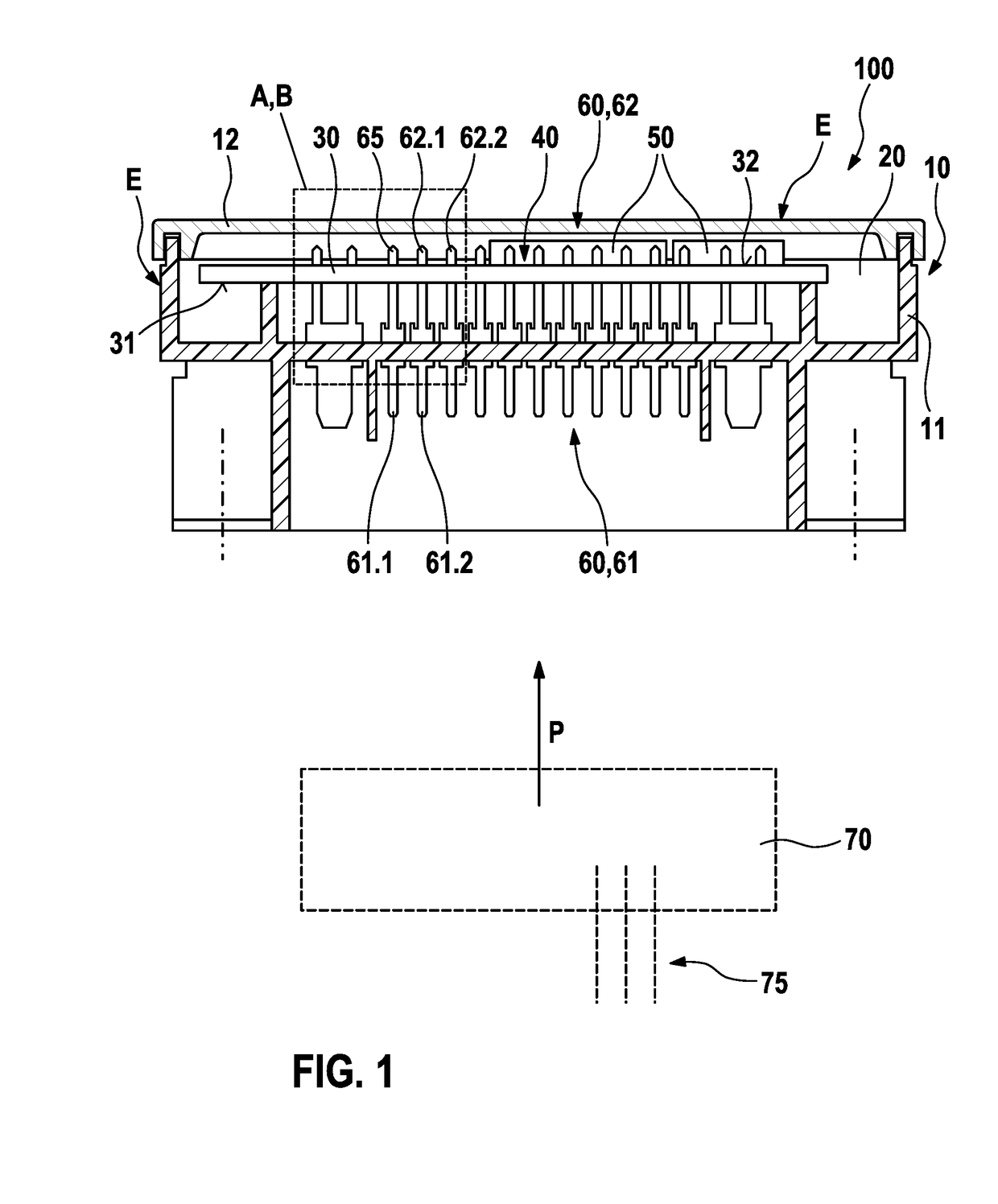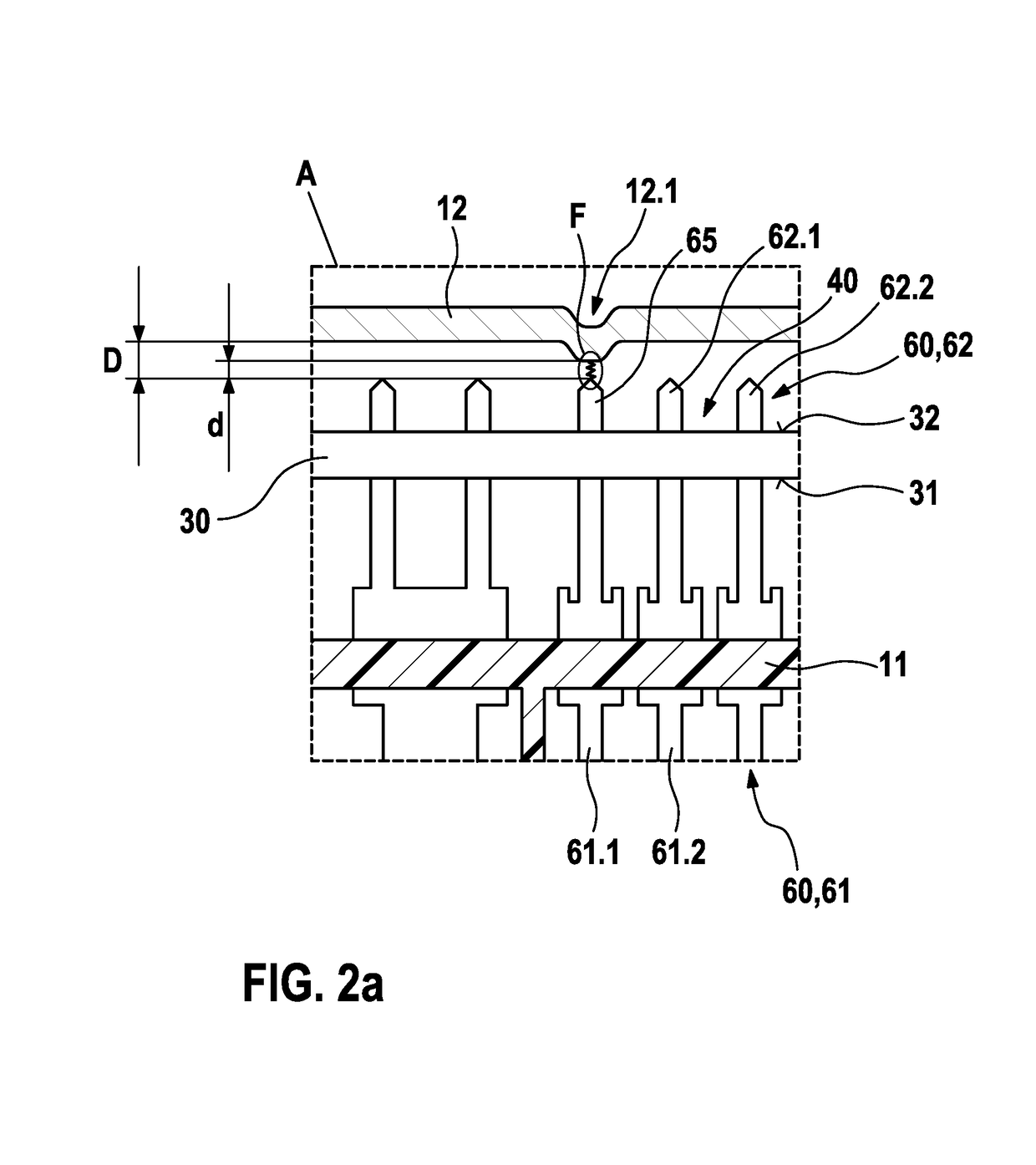Electronic device
- Summary
- Abstract
- Description
- Claims
- Application Information
AI Technical Summary
Benefits of technology
Problems solved by technology
Method used
Image
Examples
Embodiment Construction
[0019]FIG. 1 shows an electronic device according to the invention in a side cross-sectional view. The electronic device 100 comprises a housing 10, which consists of a base element 11 and a cover 12. The base element 11 is, for example, formed from plastic, in particular as a plastic injection-molded part. The cover 12 is, for example, made from metal, in particular from Al or an Al alloy. The cover is thereby set on the base element 11 and fastened to the same, for example by screws or adhesives. In so doing, a cavity 20 is formed between the cover 12 and the base part 11. A circuit carrier 30 is accommodated within the cavity 20. A conductor path structure is formed (not depicted) on an upper side 32 and / or a lower side 31 of the circuit carrier 30. Furthermore, the circuit carrier 30 is fitted with an electric and / or electronic component 50. The electric and / or electronic component 50 is in turn connected to the conductor path structure, wherein an electric and / or electronic cir...
PUM
 Login to View More
Login to View More Abstract
Description
Claims
Application Information
 Login to View More
Login to View More - Generate Ideas
- Intellectual Property
- Life Sciences
- Materials
- Tech Scout
- Unparalleled Data Quality
- Higher Quality Content
- 60% Fewer Hallucinations
Browse by: Latest US Patents, China's latest patents, Technical Efficacy Thesaurus, Application Domain, Technology Topic, Popular Technical Reports.
© 2025 PatSnap. All rights reserved.Legal|Privacy policy|Modern Slavery Act Transparency Statement|Sitemap|About US| Contact US: help@patsnap.com



